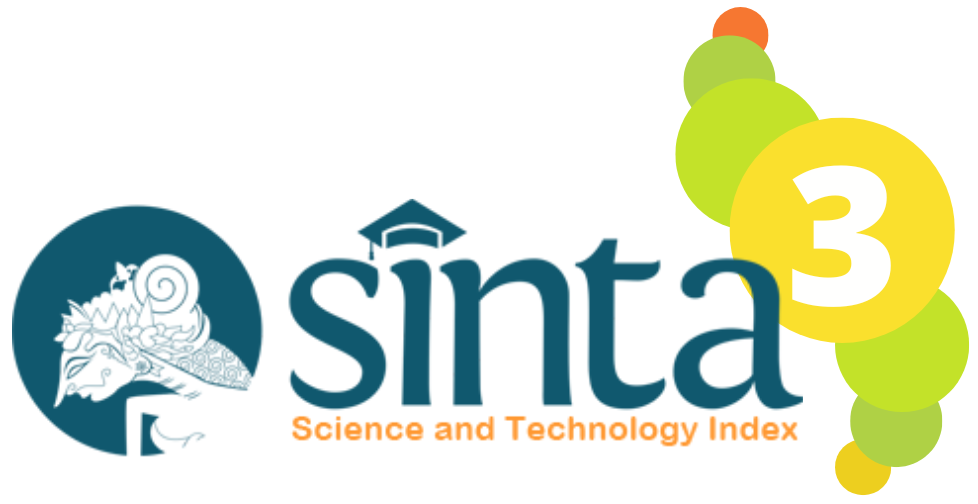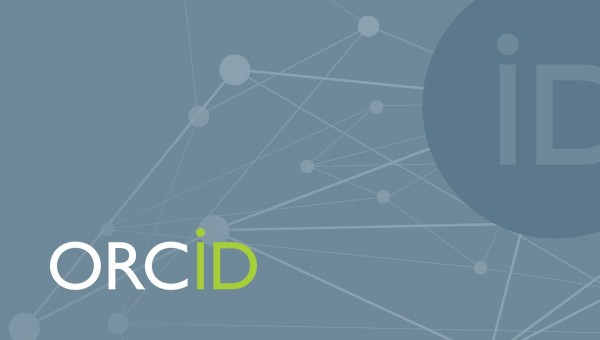Enhancing Students’ Higher-Order Thinking Skills Through Inquiry-Based e-LKPD on Boyle’s Law
DOI:
10.29303/jpft.v11i1.8756Published:
2025-06-23Issue:
Vol. 11 No. 1 (2025): January-JuneKeywords:
e-LKPD, Higher Order Thinking Skill, InquiryArticles
Downloads
How to Cite
Downloads
Metrics
Abstract
This study aimed to examine the effect of higher-order thinking skills (HOTS) through the implementation of an inquiry-based electronic student worksheet (e-LKPD) on Boyle’s Law material. The participants were students from class XI IPA 1, who served as the experimental group, and class XI IPA 2, who served as the control group at SMA Negeri 1 Pekalongan. A quasi-experimental method with a pretest-posttest group design was employed. The study involved two variables: the independent variable (the inquiry-based e-LKPD on Boyle’s Law) and the dependent variable (students’ higher-order thinking skills). Data were analyzed using N-gain analysis, an Independent Samples t-test, and an effect size calculation. The N-gain results showed an improvement in HOTS in the experimental group with a score of 0.65 (moderate category), while the control group scored 0.49 (also in the moderate category). The Independent Samples t-test produced a sig. (2-tailed) value of 0.000, indicating a significant difference in HOTS between the experimental and control groups. Additionally, the effect size analysis yielded a Cohen’s d value of 1.715, classified as a large effect. These results indicate that the use of an inquiry-based e-LKPD had a substantial impact on enhancing students’ higher-order thinking skills. In conclusion, implementing inquiry-based e-LKPD in teaching Boyle’s Law significantly improves students' ability to think at higher cognitive levels.
References
Amalia, I. A. N. F., Roesminingsih, M. V., & Yani, M. T. (2022). Pengembangan LKPD Interaktif Berbasis Liveworksheet untuk Meningkatankan Hasil Belajar IPS Sekolah Dasar. Jurnal Basicedu, 6(5), 8153–8162. DOI: https://doi.org/10.31004/basicedu.v6i5.3762
Arwin, M., Pikoli, M., Sihaloho, M., Kunusa, W.R., Tangio, J.S., Munandar, H. (2025). The Effect of Contextual Teaching and Learning (CTL) Model on Reaction Rate Material on Critical Thinking Ability and Character of Student. Jambura Journal of Educational Chemistry, 7(1), 1-11.
Bhardwaj, V., Zhang, S., Pandey, V (2023). Redefining learning: student-centered strategies for academic and personal growth. Frontiers in Education.
Distrik, I. W., Ertikanto, C., & Sesunan, T. M. (2022). The practicality and effectiveness of the e-worksheet with creative inquiry based and HOTS oriented “3D PageFlip” for online learniasng. Jurnal Pembelajaran Fisika, 10(1), 1–20.
Distrik, I. W., & Rosidin, U. (2020). Abdurraman, “The Role of Hots-Oriented Creative Inquiry Model for Improving Self-Efficacy and Physics Problem-Solving Ability In Gender Perspectives,”. International Journal of Psychosocial Rehabilitation, 24(9), 2254-2263.
Distrik, I. W., Ertikanto, C., & Sesunan, F. (2019). The Practicality and Effectiveness of the E-Worksheet with Creative Inquiry Based and HOTS Oriented “3D PageFlip” for Online Learning. Jurnal Pembelajaran Fisika, 10(1), 1–10. https://doi.org/10.23960/jpf.v10.n1.202201 DOI: https://doi.org/10.23960/jpf.v10.n1.202201
Drastisianti, A., Dewi, A.K., Alighiri, D. (2024). Effectiveness of Guided Inquiry Learning with PhET Simulation to Improve Students’ Critical Thinking Ability and Understanding of Reaction Rate Concepts. International Journal of Pendagogy and Teacher Education, 8(2), 235-252. DOI: https://doi.org/10.20961/ijpte.v8i2.93924
Faizah, S. N., & Jamila, N. H. (2022). Efektivitas Lembar Kerja Peserta Didik Elektronik Berbasis Problem Based Learning Di Era New Normal Terhadap Hasil Belajar Tematik. BASICA; Journal of Primary Education, 2(2).
Fauzia, D.P., Badarudin, B., & Supriatna, S. (2019). Peningkatan Keterampilan Berpikir Kritis dan Sikap Ilmiah Peserta Didik Melalui Model Inkuiri Terbimbing. Jurnal Madrasah Ibtidaiyah, 4(2), 57-66. DOI: https://doi.org/10.31602/muallimuna.v4i2.1860
Feronica, R.A., Apriani, E., Edy, S. (2021). The Implementation of Higher Order Thinking Skill (HOTS) in Junior High School: Teaching Practice and Problems. ENGLISH FRANCA : Academic Journal of English Language and Education 5(2), 185-200. DOI: https://doi.org/10.29240/ef.v5i2.2589
Ginting, A.A., Kuswandono, P. (2020). Challenges Faced by English Teachers: Implementation of Higher Order Thinking Skills (HOTS) in Designing Assignments in East Indonesia. Pendagogy: Journal of English Language Teaching 8(1). DOI: https://doi.org/10.32332/pedagogy.v8i1.1688
Gunawan, G., Simanjutak, M.A., Damanik, M.Z., Nasution, H.B. (2022). Educators Thinking Tool (Case Study of Educators' Mindset Against Logic, Language and Mathematics at Keatif Media State Polytechnic). Indonesian Journal of Education & Mathematical Science 3(2), 79-83.
Hafid, N. S. P. A. (2023). A Comparison of Teacher-Centered and Student-Centered Approaches in the English Learning Process for Students of SMP Negeri 2. Academia.edu.
Hikmah, N., Putri, N. A., Nisa, K., Jauhariyah, M.N.R., (2021). Using Quizizz to Develop an Assessment of Physics Learning: An Alternative Way for Physics Learning Assessment in the Covid-19 Pandemic Era. Journal of Physics: Conference Series, Vol. 1805, p012021. IOP Publishing. DOI: https://doi.org/10.1088/1742-6596/1805/1/012021
Hmelo-Silver, C. E., Duncan, R. G., & Chinn, C. A. (2007). Scaffolding and Achievement in Problem-Based and Inquiry Learning: A Response to Kirschner, Sweller, and Clark (2006). Educational Psychologist, 42(2), 99–107. DOI: https://doi.org/10.1080/00461520701263368
Hwang, G. J. (2015). Effects of Inquiry-Based Learning on Critical Thinking Skills. Journal of Interactive Learning, 29(4), 317-335.
Ichsan, I. Z., Hasanah, R., Ristanto, R. H., Michael, B. C., Widiyawati, Y. (2020). Designing an Innovative Assessment of HOTS in the Science Learning for the 21st Century. Jurnal Penelitian dan Pembelajaran IPA, 6(2), 211-224. DOI: https://doi.org/10.30870/jppi.v6i2.4765
Maishara, N., Liza, N., & Reflin, D. (2023). Pemanfaatan internet sebagai sumber belajar bagi siswa di SMA Negeri 1 Bandar Baru Kabupaten Pidie Jaya–Aceh. Jurnal Penelitian Pendidikan dan Pembelajaran, 10(4), 211–219. DOI: https://doi.org/10.56393/lucerna.v3i2.1299
Marini, R., Ansori, H., Mawaddah, S.. (2021). Kemampuan Berpikir Tingkat Tinggi Menurut Teori Anderson dan Krathwohl pada Siswa SMP Kelas IX. Jurnal Mahasiswa Pendidikan Matematika, 1(1). DOI: https://doi.org/10.20527/jurmadikta.v1i1.729
Panggabean, D. D., Rajagukguk, M. H., Goni, F. P. K., Sitinjak, M. C. A., Simanihuruk, R. T., & Rangkuti, Y. L. (2022). Penerapan Model Pembelajaran Inkuiri Terbimbing untuk Meningkatkan High Order Thinking Skills Siswa SMP. Jurnal Pendidikan Fisika, 11(1). DOI: https://doi.org/10.24114/jpf.v11i1.30200
Pedaste, M., Mäeots, M., Siiman, L. A., de Jong, T., van Riesen, S. A. N., Kamp, E. T., Manoli, C. C., Zacharia, Z. C., & Tsourlidaki, E. (2015). Phases of inquiry-based learning: Definitions and the inquiry cycle. Educational Research Review, 14, 47–61. DOI: https://doi.org/10.1016/j.edurev.2015.02.003
Rahmawati, S., Rochintaniawati, D. (2021). Thinking Disposition Profile of Class XI IPA Students in a Palembang School. Indonesian Science Education Journal 2(2).
Sa’adah, M., Suryaningsih, S. Muslim, B. (2020). Pemanfaatan multimedia interaktif pada materi hidrokarbon untuk menumbuhkan keterampilan berpikir kritis siswa. Jurnal Inovasi Pendidikan IPA, 6(2), 180–191. DOI: https://doi.org/10.21831/jipi.v6i2.29680
Sari, D. E., Herlina, K., Viyanti., Andra, D., Safitri, I. (2023). E-module Newton's Law of Gravity sarbased Guided Inquiry to Train Critical Thinking Skills. Physics Education Research Journal: Vol. 5 No 1. DOI: https://doi.org/10.21580/perj.2023.5.1.11657
Sari, M., Andra, D., Distrik, I. W., & Aleksandervic, K. S. (2022). Problem-Based E-Module Integrated with STEM and Assisted by LMS to Foster Creative Thinking Ability. Indonesian Journal of Science and Mathematics Education, 5(2), 224–237. https://doi.org/10.24042/ijsme.v5i2.13087 DOI: https://doi.org/10.24042/ijsme.v5i2.13087
Sembiring, N.S., Siregar, J., Maulida, R. (2023). Pengaruh Model Pembelajaran Inquiry Training Terhadap Kemampuan Higher Order Thinking Skills Siswa Di Kelas X SMA Generus Bangsa Kutalimbaru Tahun Pelajaran 2021/2022. Jurnal Penelitian Pendidikan MipA (JP2MIPA), 8(1). DOI: https://doi.org/10.32696/jp2mipa.v7i2.2240
Septiani, E.S., Sugiyanti, S., Rubowo, M.R. (2021). Profil Kemampuan Berpikir Kreatif dalam Menyelesaikan Soal HOTS Ditinjau dari Kemampuan Koneksi Matematis Sedang. Jurnal Matematika dan Pendidikan Matematika, 3(2). DOI: https://doi.org/10.26877/imajiner.v3i5.7744
Syaifudin, M. (2022). Efektivitas E-LKPD Berbasis STEM untuk Menumbuhkan Keterampilan Literasi Numerasi dan Sains dalam Pembelajaran Listrik Dinamis di SMA Negeri 1 Purbalingga. Jurnal Riset Pendidikan Indonesia, 2(2), 211–220.
Syahri, A. A., & Ahyana, N. (2021). Analisis Kemampuan Berpikir Tingkat Tinggi Menurut Teori Anderson dan Crathwohl. Jurnal Riset dan Inovasi Pembelajaran. DOI: https://doi.org/10.51574/jrip.v1i1.16
Utami, S.W., Sunandar, A., Kurniawan, A.D. (2020). Application of Two Problem Solving Cycles to Students' Higher-Order Thinking Skills on Reproductive System Material. Journal of Biological Education Indonesia, 6(3), 383-388. DOI: https://doi.org/10.22219/jpbi.v6i3.12024
Wahyuni, N., & Fitrawati, F. (2024). Teachers' Perceptions of Teacher-Centered Learning (TCL) in Learning English at Senior High Schools in Agam Regency. Journal of English Language Teaching, 13(1).
Zaki, M., Amalia, R., & Sofyan, S. (2020, April). Development of high order thinking skills (HOTS) test instrument on exponent for junior high school students. In Journal of Physics: Conference Series (Vol. 1521, No. 3, p. 032096). IOP Publishing. DOI: https://doi.org/10.1088/1742-6596/1521/3/032096
Author Biographies
Nadiyah Daman Saputri, Universitas Lampung
I Wayan Distrik, University of Lampung
License
Copyright (c) 2025 Nadiyah Daman Saputri, I Wayan Distrik, Kartini Herlina

This work is licensed under a Creative Commons Attribution-ShareAlike 4.0 International License.
Authors who publish with Jurnal Pendidikan Fisika dan Teknologi (JPFT) agree to the following terms:
- Authors retain copyright and grant the journal right of first publication with the work simultaneously licensed under a Creative Commons Attribution License 4.0 International License (CC-BY-SA License). This license allows authors to use all articles, data sets, graphics, and appendices in data mining applications, search engines, web sites, blogs, and other platforms by providing an appropriate reference. The journal allows the author(s) to hold the copyright without restrictions and will retain publishing rights without restrictions.
- Authors are able to enter into separate, additional contractual arrangements for the non-exclusive distribution of the journal's published version of the work (e.g., post it to an institutional repository or publish it in a book), with an acknowledgement of its initial publication in Jurnal Pendidikan Fisika dan Teknologi (JPFT).
- Authors are permitted and encouraged to post their work online (e.g., in institutional repositories or on their website) prior to and during the submission process, as it can lead to productive exchanges, as well as earlier and greater citation of published work (See The Effect of Open Access).










